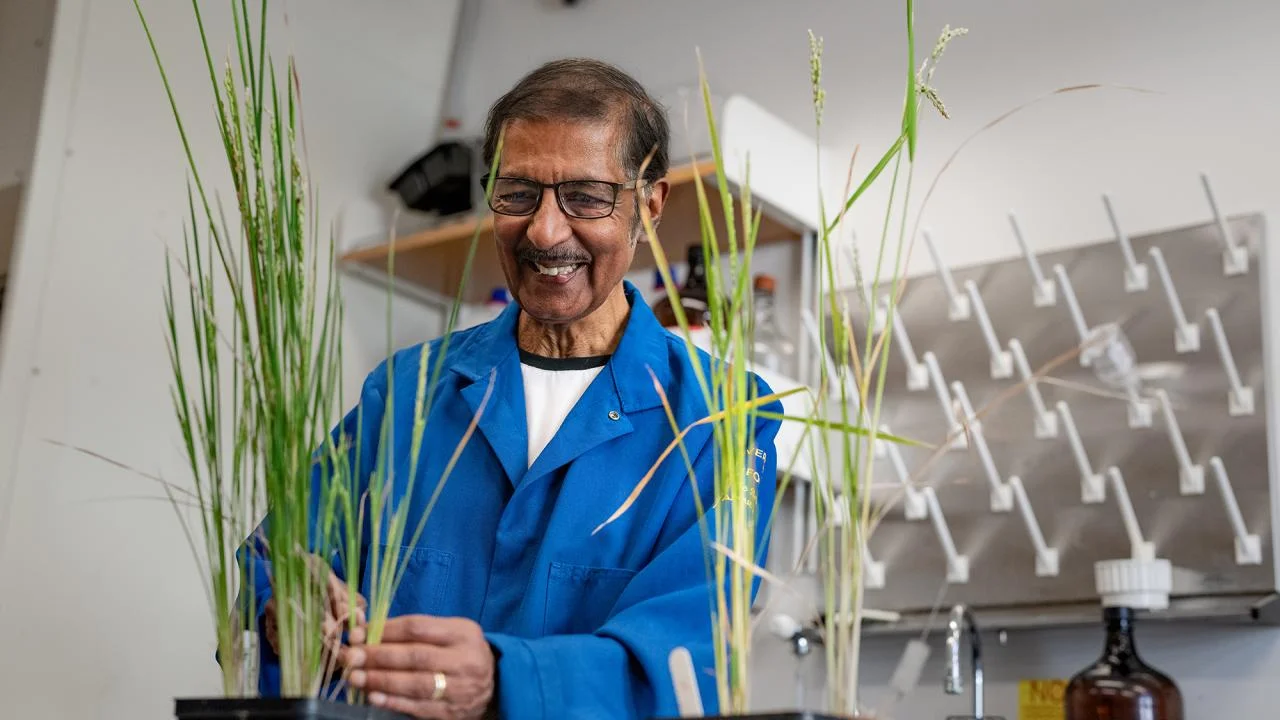

news
Meet an IGI Scientist: Isaiah Mohr
This series introduces the public and fellow researchers to our talented scientists. We interview different IGI members to find out who they are and what makes them passionate about science.
—
Isaiah Mohr is a graduate student in the Dinesh-Kumar Lab. His research focuses on engineering viruses to deliver new traits to plants.
Where are you from?
I was made in China but born and raised in the great suburban sprawl of Orange County, CA and have been a California boy my whole life. I grew up next door to the Pacific Ocean, Disneyland, and Little Saigon. I got my bachelor’s degree at Cal State Long Beach, did a stint as a CIRM (California Institute of Regenerative Medicine) stem cell researcher at UC Irvine, and left SoCal for refreshingly rural Davis, CA in 2016.
Why did you become a scientist?
I became a scientist to help feed the world. My sister (an agriculture student at Cal Poly San Luis Obispo) got me started on thinking about food systems when, out of the blue, she dropped off five chickens for me to raise from chick to pullet to laying hen. That laid the thought of studying ag in my mind, but it was an obituary in The Economist to Norman Borlaug, father of the green revolution and fierce defender of the promise of GMO technology, that hatched in me a desire to study and promote genetic engineering technologies for the benefit of all (and to use that technology in the coolest ways possible).
What do you like to do besides research?
Cooking, hiking, science communication activities with Science Says (the campus science communication club), veeeeryyyy sloooowlyyyy learning Japanese tanka, raising my guinea pigs, and eating Oreo and Reeses.
Describe a funny memory you have of working in the lab or in research.
I spent a semester TAing microbiology. We taught sterile technique, sample handling, dye use, identification schemes – the works. The labs were always late at night, after a long and intense lecture, and students (most of them worked during the day) were commonly exhausted by the end.
One night, we were working to identify coliform bacteria through a series of staining protocols and biochemical assays. One corner of the lab had two long-time nurses coming back to school to recertify; they’d had a very long day. As one of them was just about to wash some dye, the microscope slide slipped from her hand. With an audible tink it landed flat in the sink. She threw her hands up in the air in frustration and just stared at her work, which was very close to literally going down the drain.
“I’m going to have to do all that over again, aren’t I?” she asked me as I joined her at the dye-encrusted sink.
“Not if you act fast.” I said, completely deadpan. “5 second rule.”
I was a stoic TA – this was legitimately the first time I’d ever made a group of students laugh. The nurse and her table had a new spring in their step, and, remarkably, managed to finish everything on time.

If you discovered a new (protein/species/technology) what would you name it?
If I discover anything, I’ll follow in the vein of Drosophila researchers and name it after something ridiculous, like the Legend of Zelda video game series – a plant named Deku spp., a trimeric protein complex named Triforce, a technology called SHEIKAH…
Tell us about someone or something that inspires you.
This may not be the ideal hero, but I’ve always been in awe of weeds – daffodils, dandelions, and the like – that pop up in the most innocuous cracks in the road or bare dirt, strain upwards toward the light and downwards toward water and nutrients and, floosh, flower! Weeds are a testament to the will to live and continue on that is in us all.
Anything else you want to tell the world?
- Scientists are people, too!
- Don’t fear GMOs!


